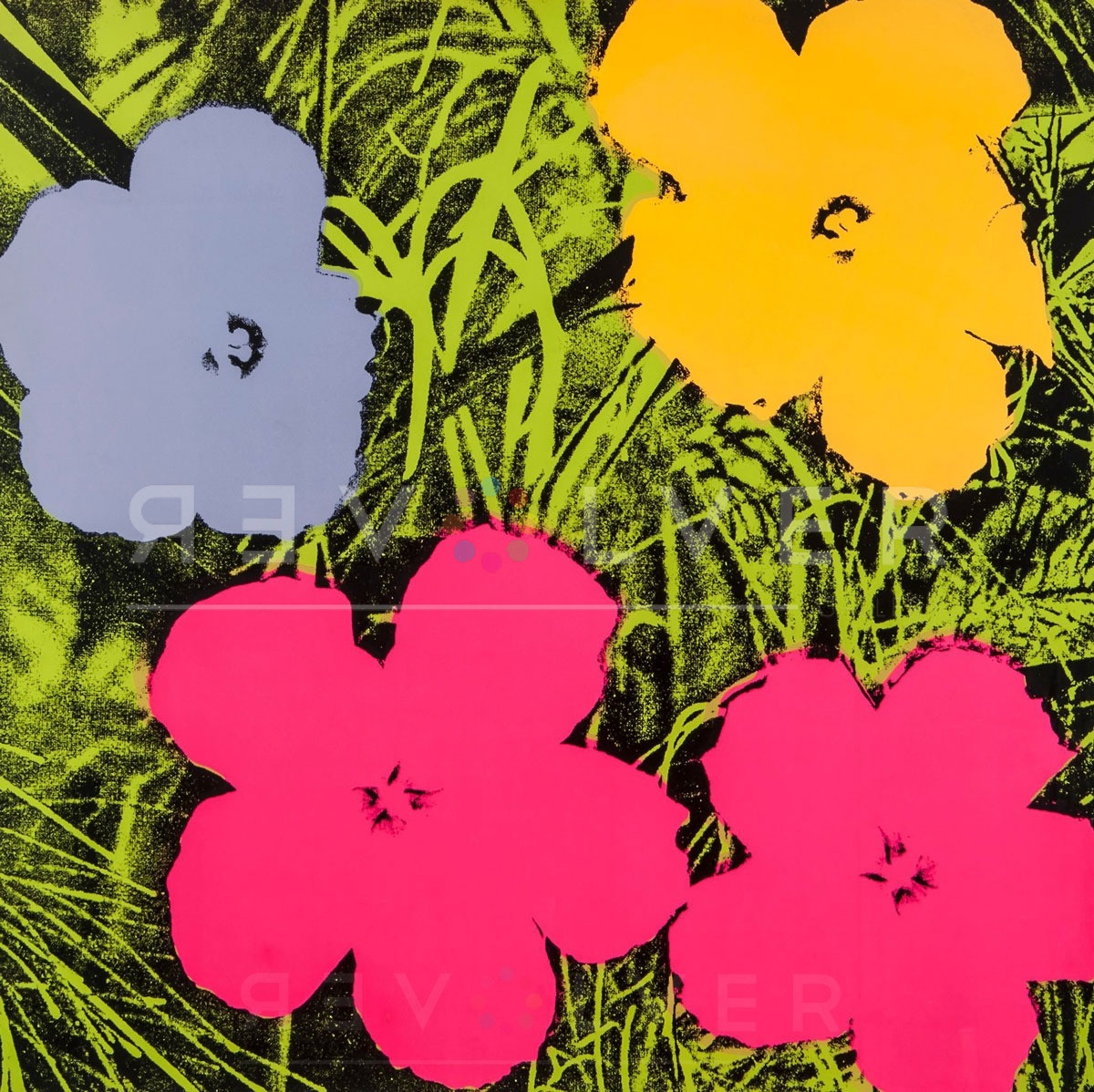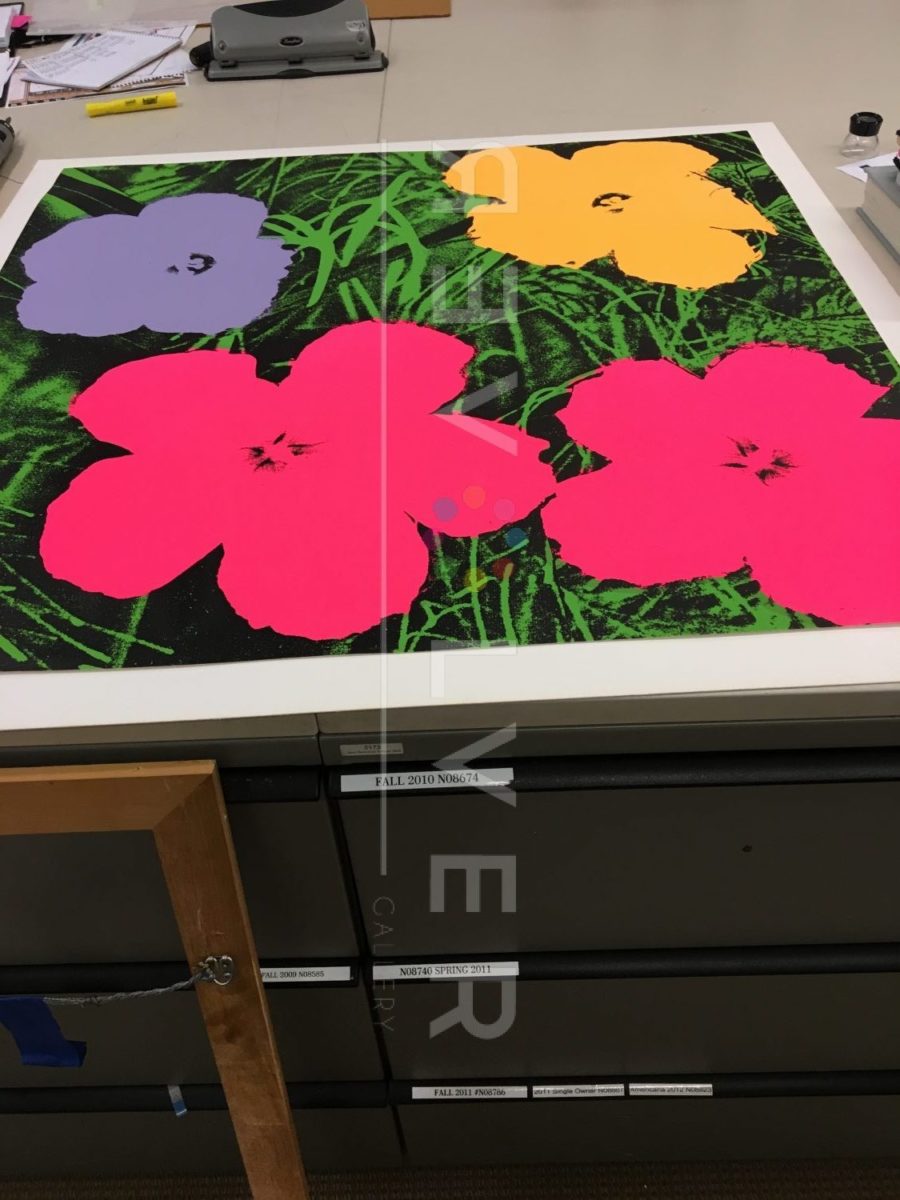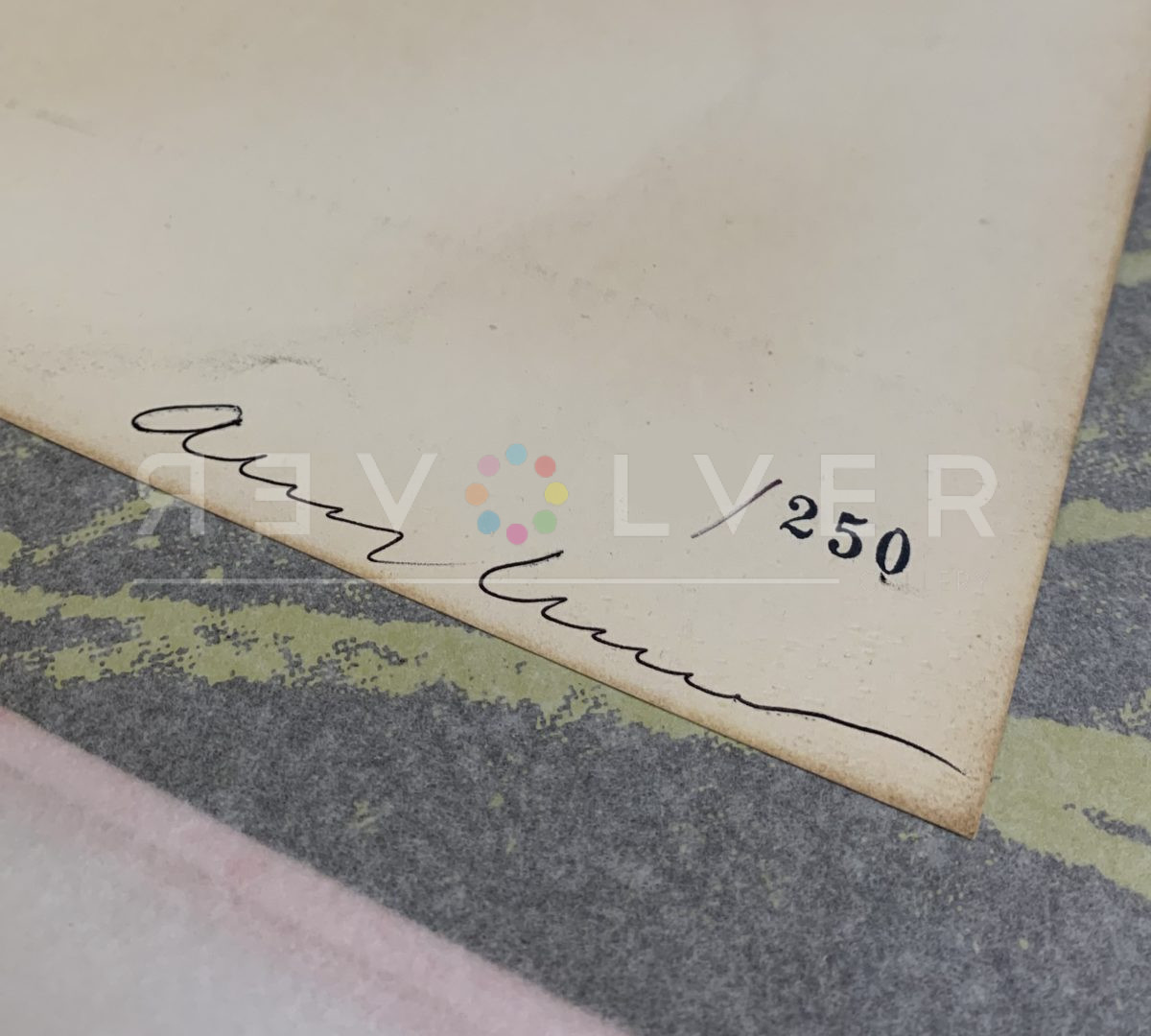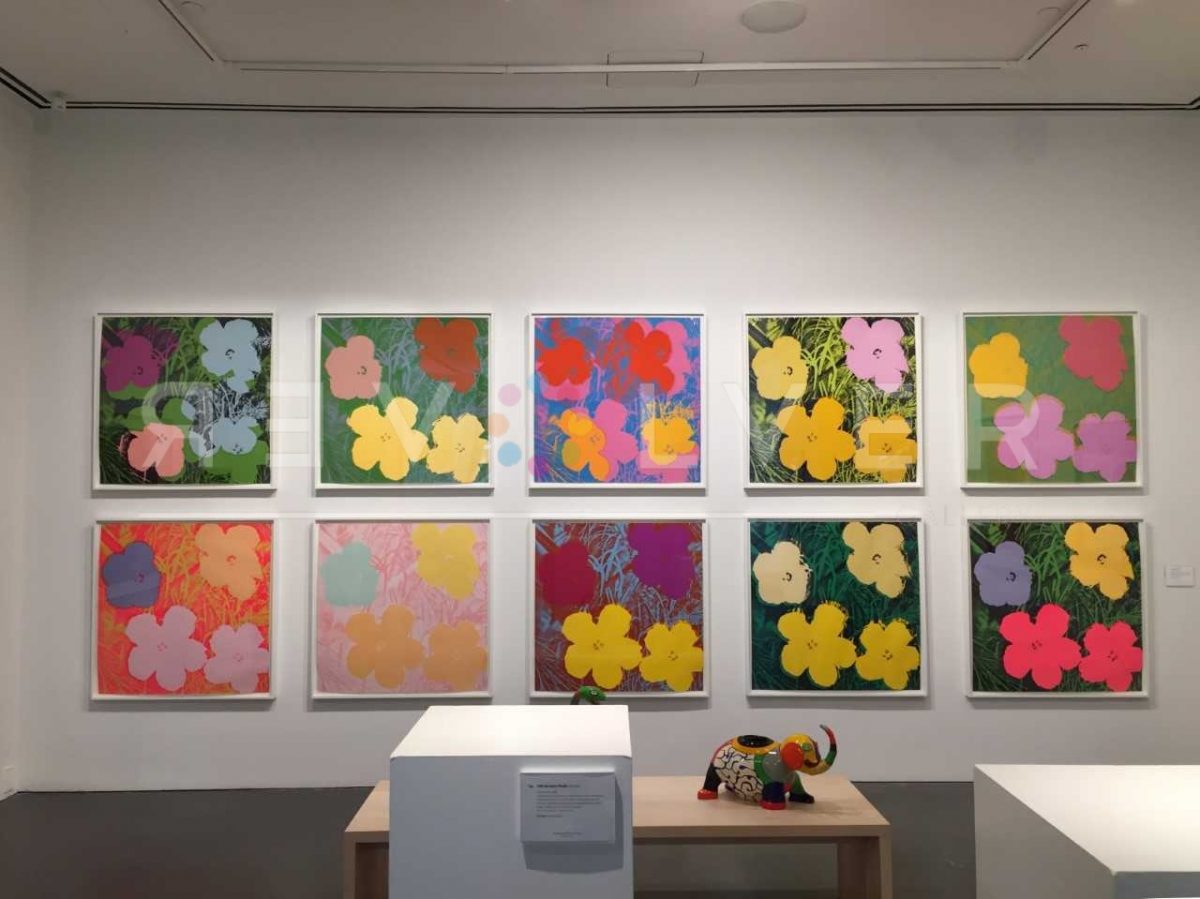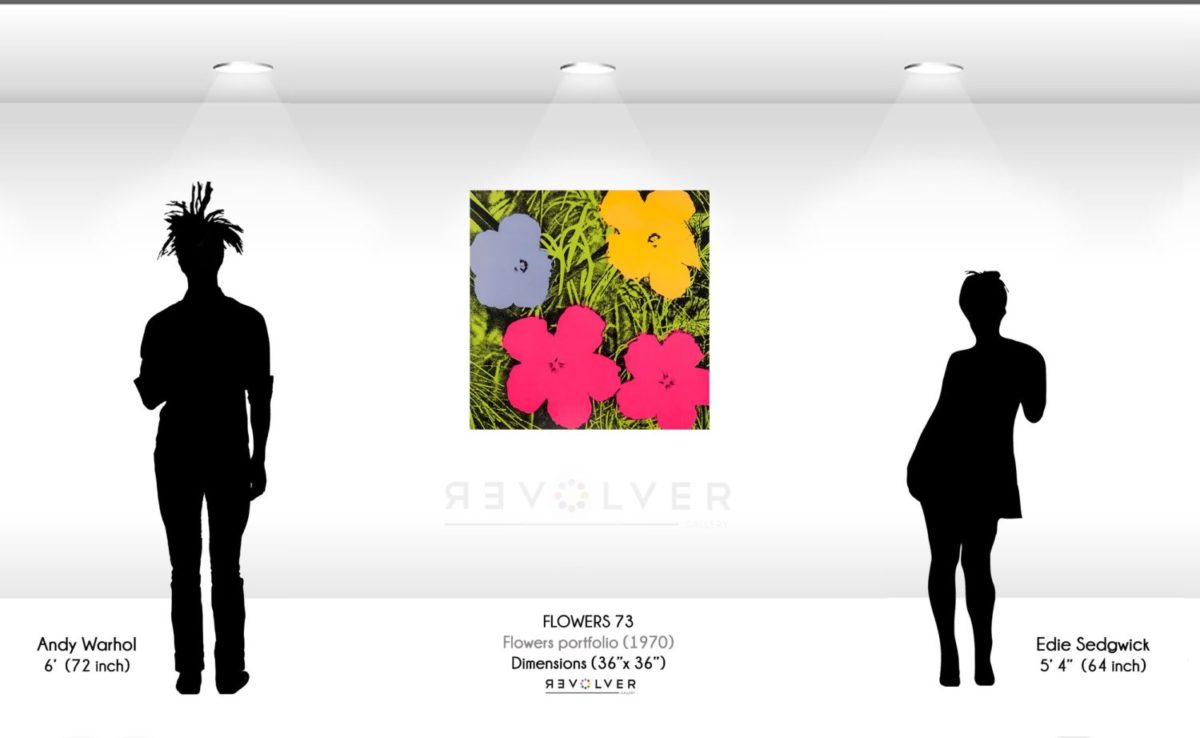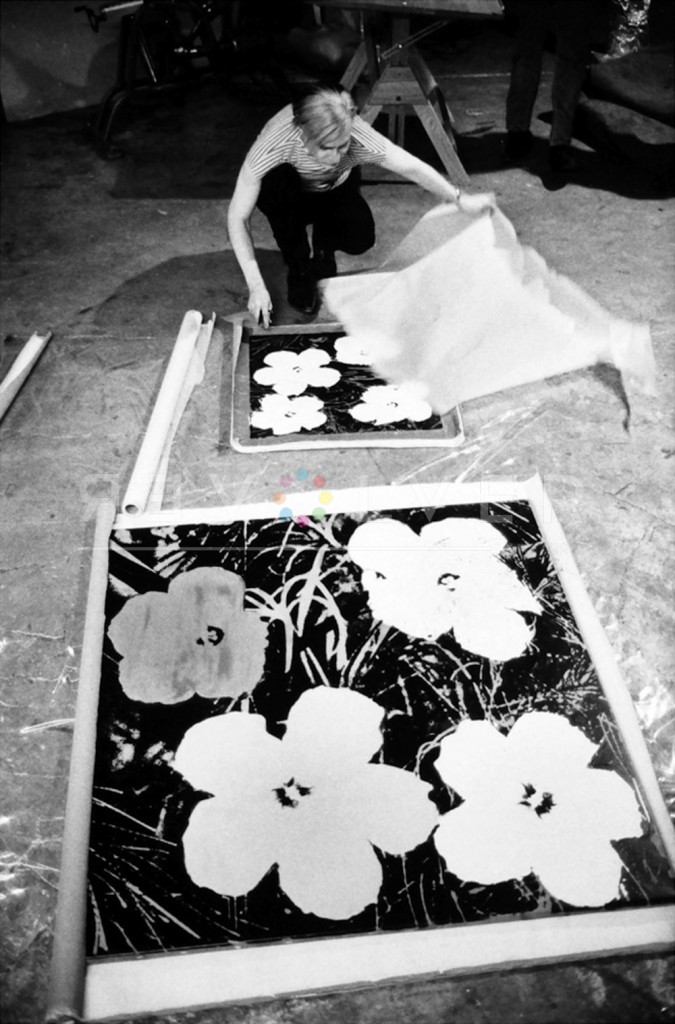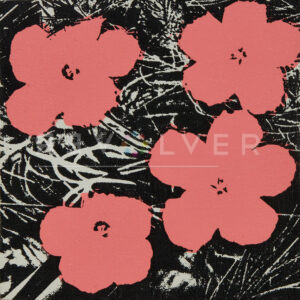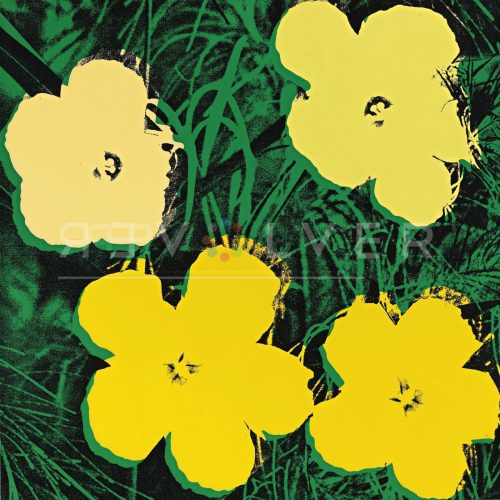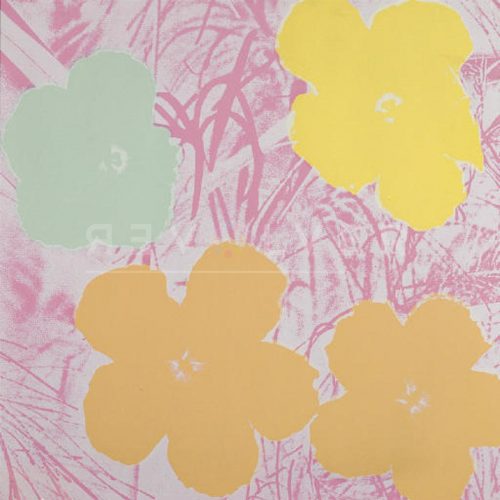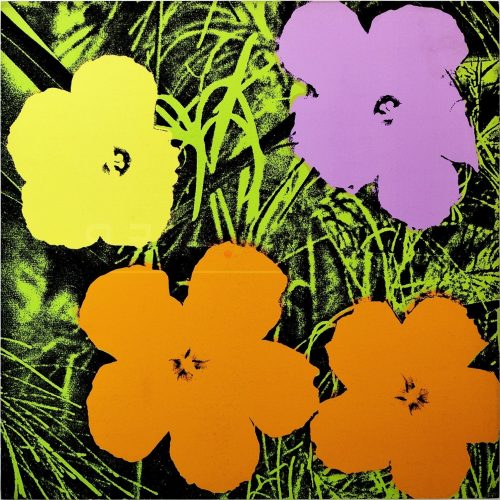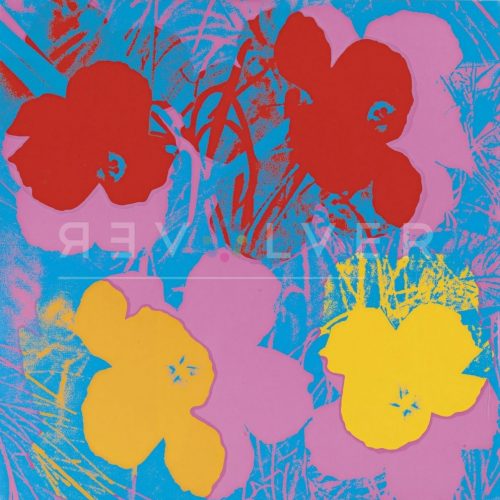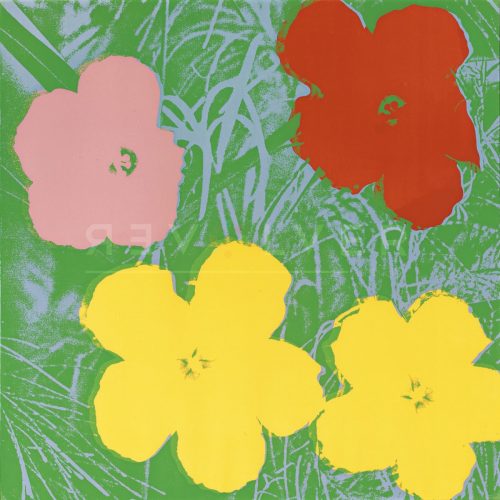Flowers 73 by Andy Warhol is one of ten screenprints from the artist’s monumental Flowers series. Warhol originally conceived and exhibited Flowers during the 1960s, but returned to publish the images in 1970. The classic Flowers 73 is a blazing display of the artist’s Pop bravura. The loud colors and stripped down, commercialized subjects make this print one of Warhol’s most distinctive works. The complete Flowers series ranks amongst Warhol’s most valuable portfolios of all time.
Warhol loved flowers and once said he always took time to notice them. While his ascent to fame and renown came primarily from works like Triple Elvis, Marilyn Monroe, and Campbell’s Soup, the artist’s interests stretched far beyond the reaches of stardom. Portfolios like Electric Chair, Shadows, and Cow illustrate his range. No matter the subject, he could make any work of art relevant to modern society. Further, his iconic twist on such a timeless motif demonstrates Warhol’s singularity as an artist.
In Flowers 73, Warhol allowed the hibiscus blossoms to shine in shades of hot pink, yellow and lavender. Superimposed on a bed of neon green grass, the flowers perch atop the background in all their glory. Simultaneously, dark shadows interwoven through the image enhance the brilliant hues in the piece. While other prints in this series experiment with the relationship between the background and the foreground, Flowers 73 is much more classic. In placing colorful flowers against a field of bright green grass, Warhol leaves his mark on an artistic tradition. “In a funny way, he was kind of repeating the history of art,” Gerard Malanga commented. “It was like, now we’re doing my flower period! Like Monet’s water lilies, Van Gogh’s flowers…”
While there is no doubt Warhol wanted his flowers to be a staple of modern art, he also wanted the image to be as commercial as possible. “I started as a commercial artist, and I want to finish as a business artist. Being good in business is the most fascinating kind of art,” he said. Flowers 73 is an eye-catching piece that strips the petals of their detail, leaving only the familiar shapes and colors. In addition, he used the same silkscreen process for Flowers that he first created as a young commercial artist working on advertising campaigns. As a result, the work is a Technicolor feast for the eye and thus a celebration of everything Pop represented. Here, Warhol takes what is familiar and magnifies its splendor tenfold, making the image both popular and profitable.
Patricia Caulfield shot the original photograph used for Flowers 73, which appeared in Modern Photography’s June 1964 issue. She sued Warhol for using the image without her approval and won the case. After the trial, Warhol grew apprehensive about appropriating photographs and decided to start taking his own instead. Though the experience distressed him, it also led Warhol down a path of broadened exploration.
Flowers 73 is perhaps one of Warhol’s greatest works. While one may think of flowers as a common subject in the art world, Warhol made them over for a modern, consumer-oriented generation. Over fifty years have passed since he first painted the hibiscus flowers in the summer of 1964, yet the prints continue to be some of the most sought-after Warhols today.
Photo credit: Andy Warhol silk-screening Flowers, 1965-7. Photo by © Stephen Shore.

